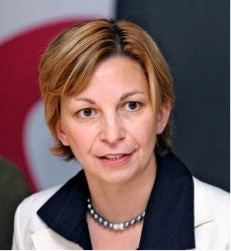 The Big Bad Wolf
The Big Bad Wolf
In a recent blog, we retold the tale of the three little pigs as the story of tertiary education financing in Western Europe, with COVID-19 as the big bad wolf shaking the foundations of various funding models. We observed how privately and publicly funded systems, especially those that rely heavily on fees from international students, have come under pressure due to the coronavirus. Is the crisis playing out in a similar way in developing countries? What are the risks for tertiary education funding in low- and middle-income countries?
Many countries where the World Bank works share several features: (i) insufficient public funding for tertiary education (between 0.3 and 0.8% of GDP), (ii) rigid allocation mechanisms that provide no incentives for performance, (iii) uneven development and quality of private provision, and (iv) limited financial aid to compensate for the acute social disparities in access and success that continue in spite of rapid enrollment growth.
Short-term effects
As country after country imposed partial or total lockdowns, the number of universities and colleges closing their campus and switching to e-learning soared. However, few institutions were well prepared for this sudden, disruptive move. Scrambling and improvisation has occurred as administrators, instructors, and students struggled to implement broad-based online learning.
In developing countries, students from disadvantaged groups are facing tremendous difficulties. Limited internet access and low broadband capacity have severely constrained opportunities for online learning, especially in rural areas. Many students from low-income households – sometimes even faculty members – don’t own a laptop or a tablet. In addition to these digital-divide challenges, colleges and universities in poor nations have struggled to rapidly launch quality distance learning programs. Many lack experienced instructional designers, sufficient educational resources, an adequate grasp of the specifics and nuances of online education, and strong institutional capacity to deliver it.
The African University Association has already signaled that, among the 700 universities operating in Sub-Saharan Africa, very few are well prepared and sufficiently equipped to deliver their programs online. Connectivity remains an issue, and in some countries of the region governments have difficulties guaranteeing continuity in power supply.
Unlike in high-income countries, many governments of developing nations have not been able to provide stimulus packages to support the tertiary education sector during the pandemic . Instead, their financial responses have tended to reallocate resources away from the education budget to help meet the soaring expenses of the health emergency. In Kenya, for example, the Commission on University Education reallocated the equivalent of US$2.5 million of its development fund to the COVID-19 emergency fund. In Nigeria, the federal government intends to cut about US$130 million from the education sector to support its pandemic response initiatives. And even within education, there may be an inclination to move funds away from the tertiary sector to lower levels whose needs are considered more pressing.
Changing landscape for the longer term
While there are many uncertainties about the prospects for universities reopening in the next academic year, the medium-term outlook is grim in developing countries. For most higher education institutions, especially private ones that are fully dependent on tuition fees, financial survival will be seriously tested during the deep recession that many economists predict. Millions of students with limited resources could drop out of higher education altogether or shift to more affordable public institutions. It’s not unrealistic to expect many private colleges and universities to close their doors permanently. Students graduating this year are also likely to face huge employment challenges. Similarly, working students who lose their jobs may not be able to continue studying.
In the recovery phase, rather than being in a better position to rescue the tertiary sector, there are indications that governments in developing countries will face competing priorities. Many could be tempted or forced to further slash their higher education budget. Kenya has already announced a US$460 million cut for next year. In Pakistan, the governing body of the Higher Education Commission (HEC) recently warned that the sudden cut in the tertiary education budget by another US$36 million could result in “dismantling the country’s higher education system by forcing the shutdown of universities.”
Financial sustainability to ensure resilience
This is not the first time that developing countries have faced a major crisis. But the strength of universities in low- and middle-income countries may never have been tested so severely. Over the past three months, we have come to realize that the crisis will not be just a short break from academic routine, with things getting back to normal in the new academic year. It’s not just a matter of coping with short-term effects of the pandemic: this unprecedented crisis portends drastic changes in the landscape for tertiary education.
Hopefully, this crisis will be a wake-up call to reassess the vulnerabilities of the tertiary sector and the challenges of living in a global and interdependent world. The emergency support must now shift to a more systematic approach, both to the organization of higher education in the medium term (academic year 2020/21) and to longer-term sources of funding. Now more than ever, low- and middle-income countries need to design sustainable financing strategies that can protect the progress of the past decade and that align with their ambitions for higher education to make a strong contribution to the national development agenda and achievement of the Sustainable Development Goals.
In a recent letter to the African ministers of higher education, the general secretary of the Association of African Universities urged them “to use this as an opportunity to strengthen our educational institutions by making them much more resilient to unforeseen crises. This is a great opportunity to communicate clear messages to our African governments on the urgent need to strengthen our educational institutions and systems by making them future-ready and able to survive and thrive in a world of uncertainty.”
A sustainable financing strategy would involve mobilizing adequate levels of public and private resources in a balanced way. It would also require transparent and objective approaches for allocating public resources to reflect each institution’s performance on access and equity, quality and relevance, and, in the case of research-intensive universities, research and knowledge transfer. The distribution of public resources should reflect the principle of equal opportunities for all, including low-income students, women, minorities, and youths with special needs. Finally, guaranteeing multi-year funding would enable higher education institutions to develop and improve over the medium to longer term in accordance with their strategic plan.




Join the Conversation